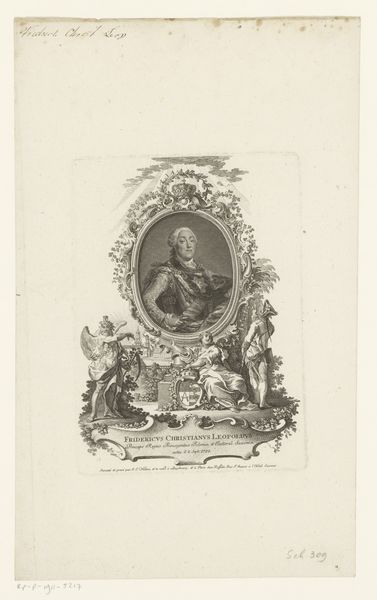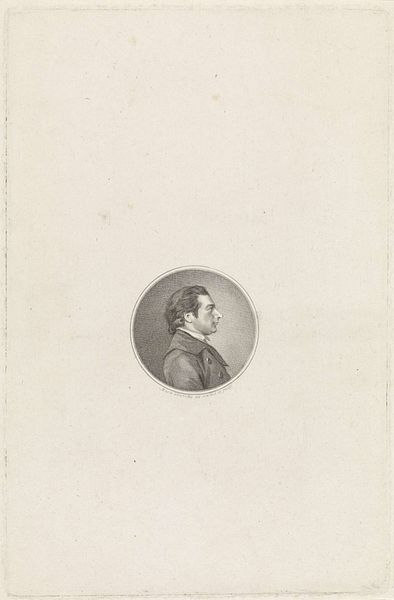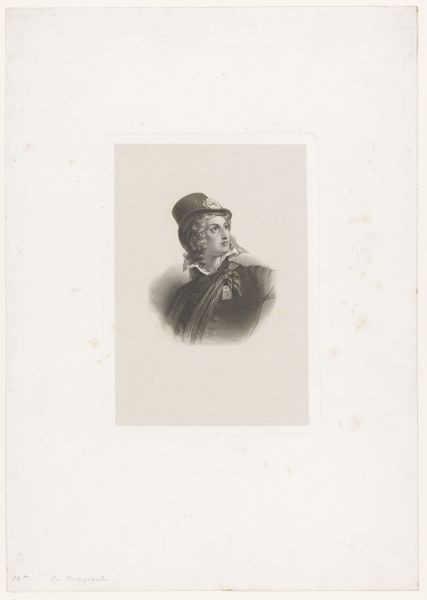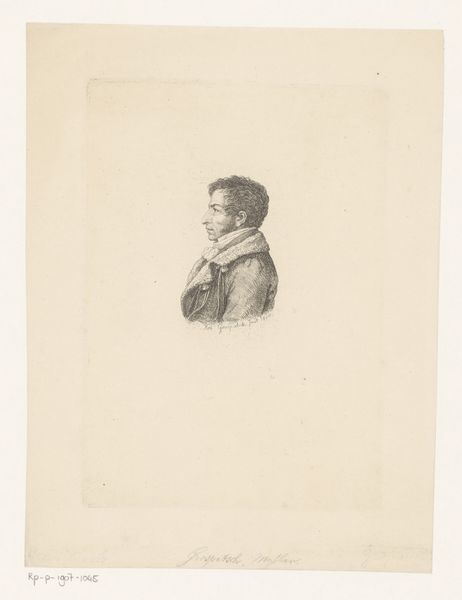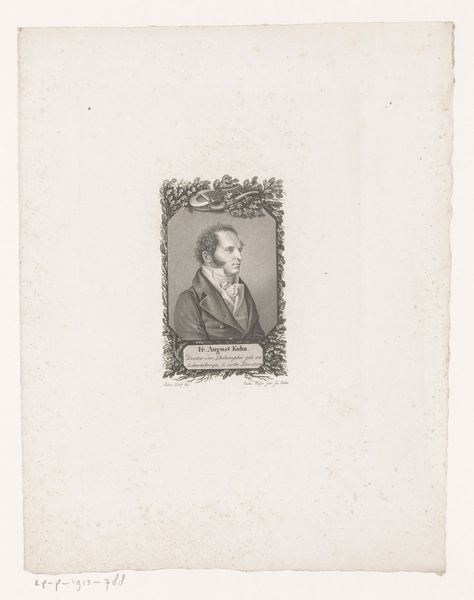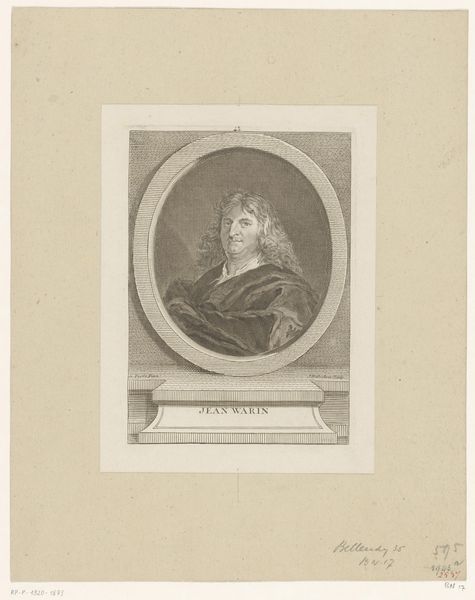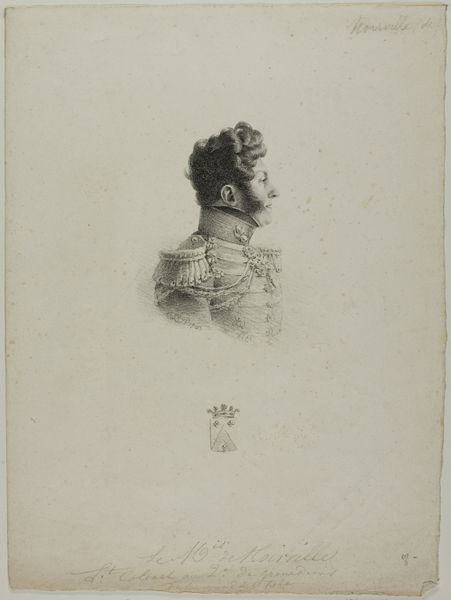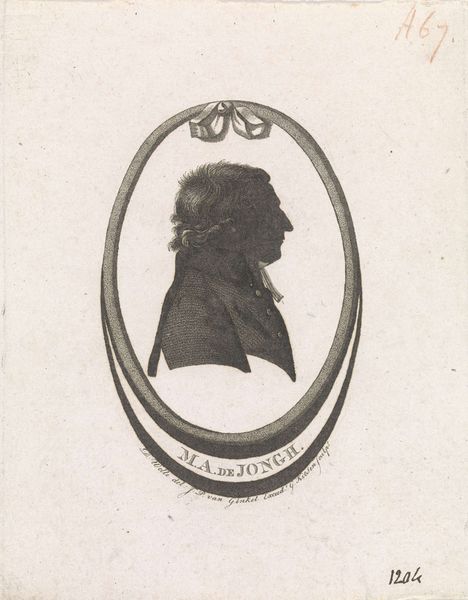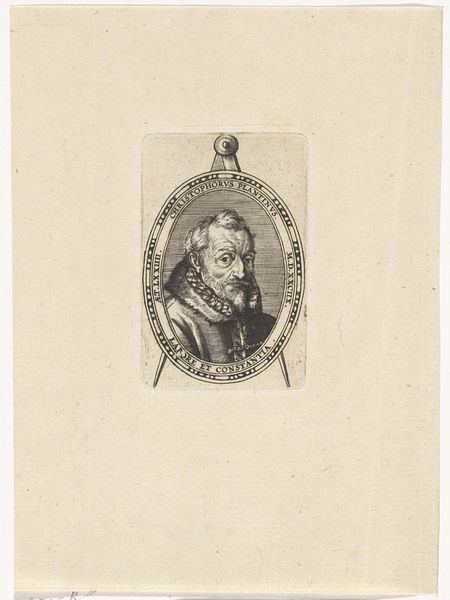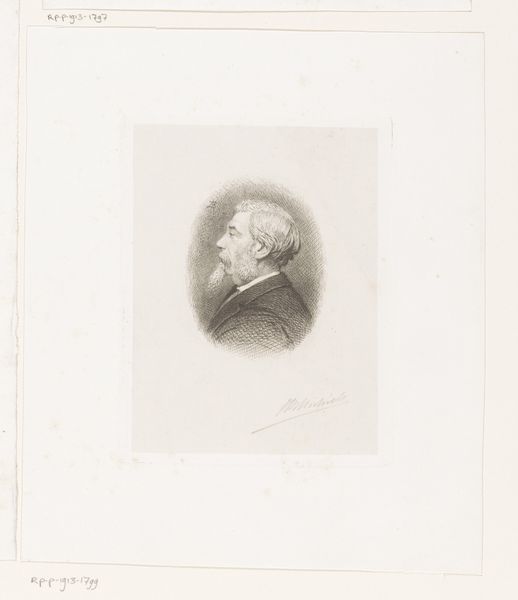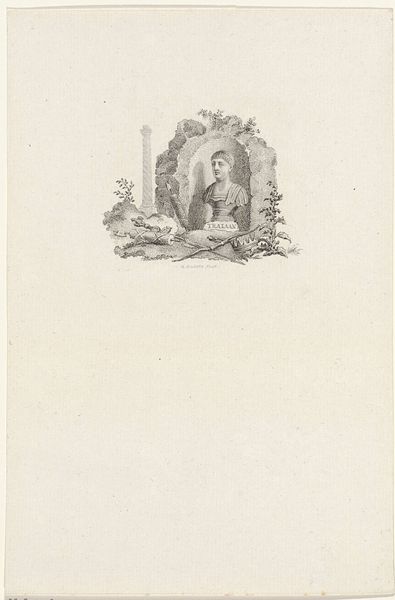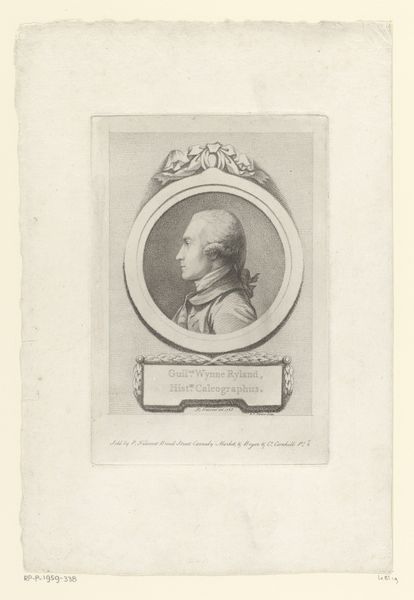
print, engraving
#
portrait
#
neoclacissism
# print
#
old engraving style
#
history-painting
#
engraving
Dimensions: height 139 mm, width 103 mm
Copyright: Rijks Museum: Open Domain
Editor: So, this engraving, "Portret van Volney," attributed to J.L. (II) Benoist, from sometime between 1785 and 1845...it's fascinating! The portrait itself has this stoic, neoclassical feel, but then there's all this... stuff surrounding it. It feels symbolic. What strikes you when you look at it? Curator: Well, isn't it a beautiful echo of an era grappling with knowledge and the exotic? Volney, caught in this oval embrace, almost a cameo… he was a philosopher, historian, orientalist! And Benoist, our engraver, isn't merely giving us a likeness, is he? It's a whole mood board of enlightenment. Editor: A mood board! I love that! Curator: That cupid up top, is he holding a mirror to truth? Then there's the sphinx, the globe… reminders of Volney's intellectual playground – the East, philosophy, exploration. And isn’t it ironic, this "print" aspiring to capture the essence of a man who chased original thought? Like trying to bottle lightning. Editor: It is ironic! So, the objects tell a story as much as the portrait itself? Curator: Precisely. Imagine each item whispered to Benoist: "Don’t forget Volney’s 'Ruins of Empires'!", hence the Egyptian nod. It’s like archaeology of a mind, excavated and elegantly rendered. Don’t you feel Benoist felt personally connected to Volney's body of work, translating it into a rich tapestry of symbolic thought? Editor: I do now! I initially thought it was just a portrait with… frills. But it's so much more deliberate. I won’t look at neoclassical portraits the same way. Curator: Excellent! Now, whenever you see such elaborate additions, ask yourself: what unspoken biography is unfolding before my very eyes? A beautiful question that, isn't it?
Comments
No comments
Be the first to comment and join the conversation on the ultimate creative platform.
